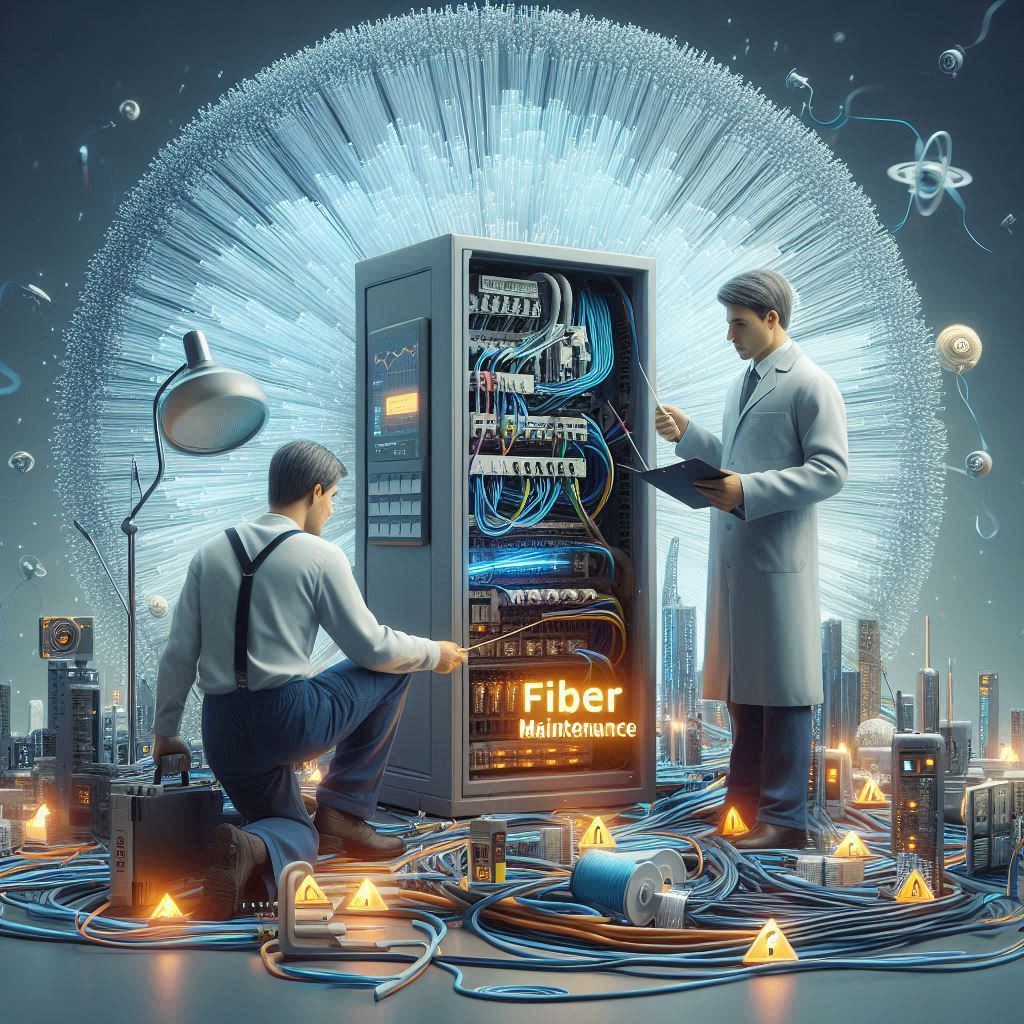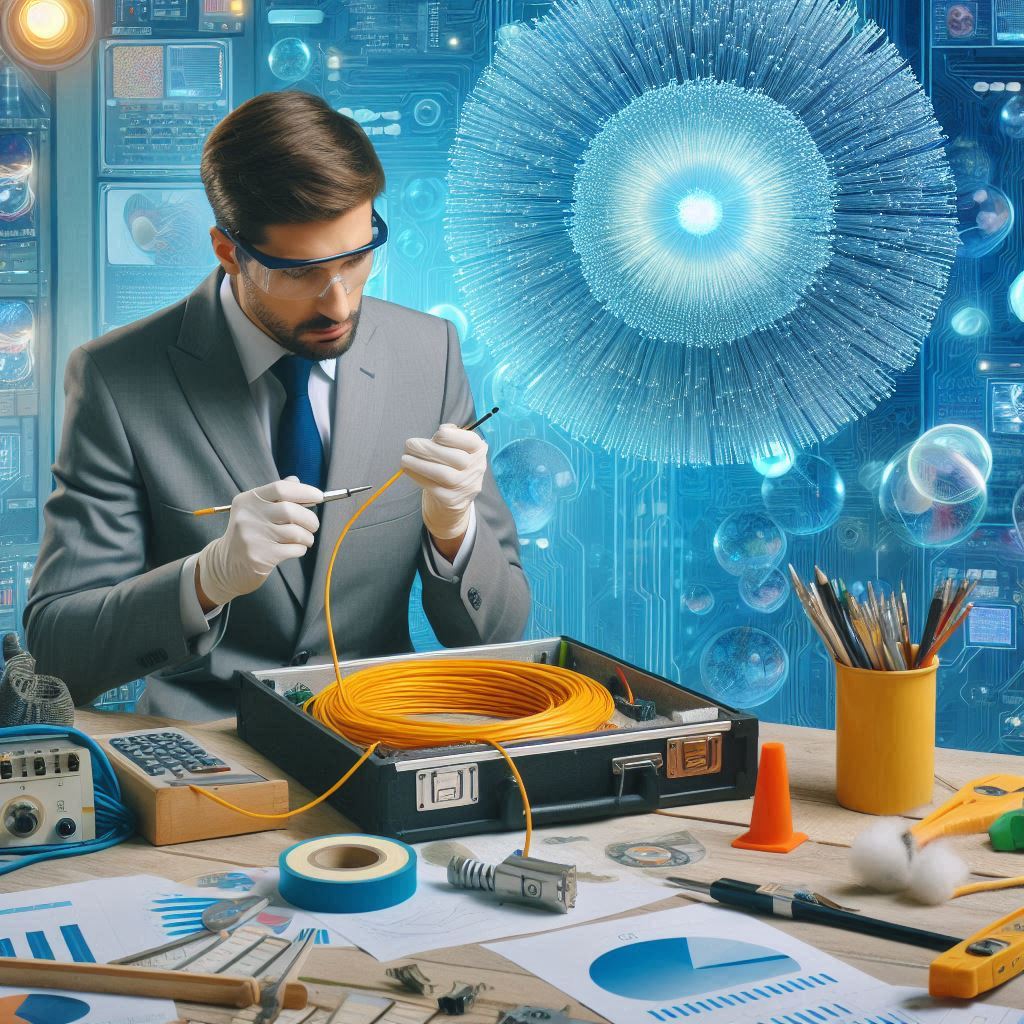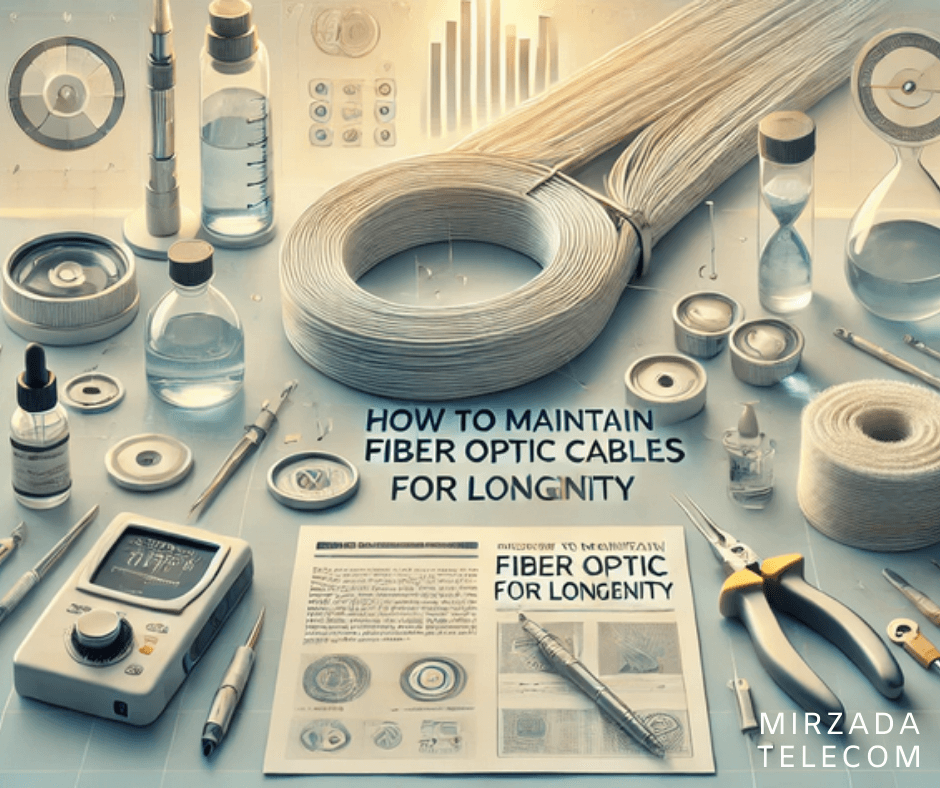Welcome! As a sub-contractor at Mirzada Telecom, I often discuss the importance of How to maintain fiber optic cables for longevity well enough to ensure their optimal performance. Maintaining these cables properly is essential not only for the longevity of the cables themselves but also for the reliability and speed of the network they support.
If you’ve ever wondered how to maintain fiber optic cables well enough to ensure their longevity, this guide will walk you through the process with practical tips, backed by data to help you make informed decisions.
Why Maintenance Matters

Fiber optic cables serve as the essential foundation for today’s communication networks. They provide high-speed data transmission over long distances, making them crucial for both residential and commercial applications. But to keep these systems performing at their best, regular maintenance is a must. Neglecting proper care can lead to signal loss, reduced bandwidth, and even network failures.
Essential Steps to Maintain Fiber Optic Cables Well Enough for Longevity

-
Cleaning: The First Step to Optimal Performance
Proper cleaning is fundamental to prevent signal loss and degradation in fiber optic cables. Dust, dirt, and contaminants can accumulate on the connectors, leading to poor connectivity and data transmission issues. Here’s how you can maintain your cables through effective cleaning:
Tools Needed:
- Fiber optic cleaning wipes
- Isopropyl alcohol (99%)
- Compressed air
- Fiber optic cleaning swabs
Procedure:
- Clean the connectors, mating adapters, and bulkhead connectors: Use fiber optic cleaning wipes with a small amount of isopropyl alcohol to thoroughly clean these components. Make sure you clean in a circular motion to avoid scratching the surface.
- Remove loose particles: Use compressed air to blow away any loose particles that may have settled on the connectors or inside the adapters.
- Inspect post-cleaning: Always inspect the connectors after cleaning to ensure no residue or contaminants remain.
-
Inspection: Catch Problems Before They Escalate
Routine inspections are key to identifying potential issues early, which helps in maintaining fiber optic cables well enough to ensure their longevity.
What to Look For:
- Bent or damaged cables: These can cause signal loss and should be repaired immediately.
- Loose connectors: Ensure all connectors are secure to avoid intermittent connection problems.
- Discoloration and contamination: This could indicate overheating or exposure to harsh environments.
- Broken fiber strands: Look for any visible signs of fiber breakage, which can disrupt data transmission.
Tools:
- Use a fiber inspection microscope to closely examine the fiber’s end face for any visible contamination or damage.
-
Testing: Regular Checks for Reliability
Regular testing is essential to maintain fiber optic cables well enough for longevity. Testing helps verify that the cables are performing optimally and allows you to identify and troubleshoot any issues promptly.
Equipment:
- Utilize fiber optic testing equipment like OTDR (Optical Time-Domain Reflectometer) to test the integrity and performance of the cables.
Frequency:
- The frequency of testing should be based on the usage and environmental conditions. For high-traffic networks, testing every 3-6 months is advisable, while less active networks may require testing annually.
-
Proper Handling and Storage: Avoid Common Pitfalls
How you handle and store your fiber optic cables can greatly affect their longevity. Here’s what to keep in mind:
Avoid Bending:
- Never bend the cables beyond their minimum bend radius. Over-bending can cause micro-bends and cracks, leading to signal loss.
Secure Storage:
- Store cables in a clean, dry environment. Moisture and contaminants can degrade the cable materials over time, affecting performance.
Expert Maintenance: Knowing When to Seek Professional Help.
While regular cleaning and inspections can be done in-house, some situations require professional intervention. In addition, For complex issues or regular maintenance, hiring professional services ensures that the cables are maintained according to industry standards.
Consult Experts:
- Professionals can perform advanced testing, repairs, and replacements that may be beyond the capability of in-house teams. At Mirzada Telecom, we recommend scheduling professional maintenance at least once a year for optimal performance.
Why Fiber Optics Are Best for Today’s Communication Needs
Fiber optic cables are unrivaled in their ability to support high-speed, reliable communication over long distances. So Let’s quickly go over some of their key benefits:
- High Bandwidth: Supports significantly higher data rates compared to copper cables.
- Longer Distances: Can transmit data without signal loss over much longer distances.
- Immunity to Electromagnetic Interference: Fiber optic cables are unaffected by electromagnetic interference, providing a stable connection.
- Durability: They are more robust and less prone to damage than traditional copper cables.
Decision-Making: Which Cable is Best for Your Needs?
When choosing between fiber optic and copper cables, consider your specific needs:
- Copper Cables: Suitable for short-distance, low-bandwidth applications. They are cost-effective but more susceptible to interference and signal loss.
- Fiber Optic Cables: Ideal for high-bandwidth, long-distance applications. In addition, They offer superior performance, durability, and reliability, making them the best choice for modern networks.
Conclusion
Maintaining fiber optic cables well enough is crucial for ensuring their longevity and optimal performance. In addition, By following proper cleaning, inspection, and testing protocols, along with professional maintenance, you can keep your fiber optic network running smoothly for years.
However, Remember, fiber optics are the future of communication, and proper care will help you make the most of this technology.
FAQs
Optic Cables for Longevity
Can I use any cleaning solution for fiber optic cables?
No, it’s recommended to use only high-purity isopropyl alcohol (99%) and fiber optic cleaning solutions to avoid damage.
How can I prevent fiber optic cables from getting damaged during installation?
Avoid over-bending and ensure cables are not pulled or twisted excessively during installation. Use proper handling tools and techniques.
What should I do if I notice a decrease in signal quality?
First, inspect the connectors for contamination and clean them if necessary. If the issue persists, conduct a comprehensive test and consult a professional if needed.
How do you maintain fiber optic cables well enough to prevent signal loss?
Regularly clean connectors, inspect for damage, and avoid excessive bending.
What tools are needed to maintain fiber optic cables well enough?
Use fiber optic cleaning wipes, isopropyl alcohol, compressed air, and testing equipment.
How often should you inspect fiber optic cables to maintain them well enough?
Inspect annually or more frequently in high-traffic or harsh environments.
Can you maintain fiber optic cables well enough without professional help?
Basic maintenance can be done yourself, but complex issues require a professional.
